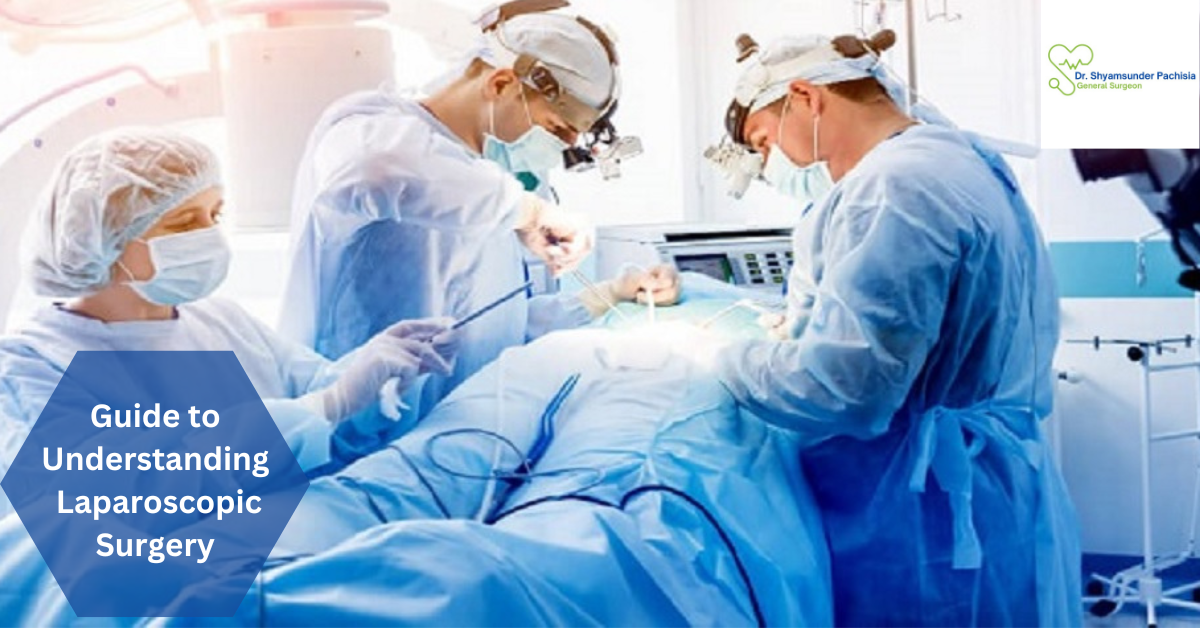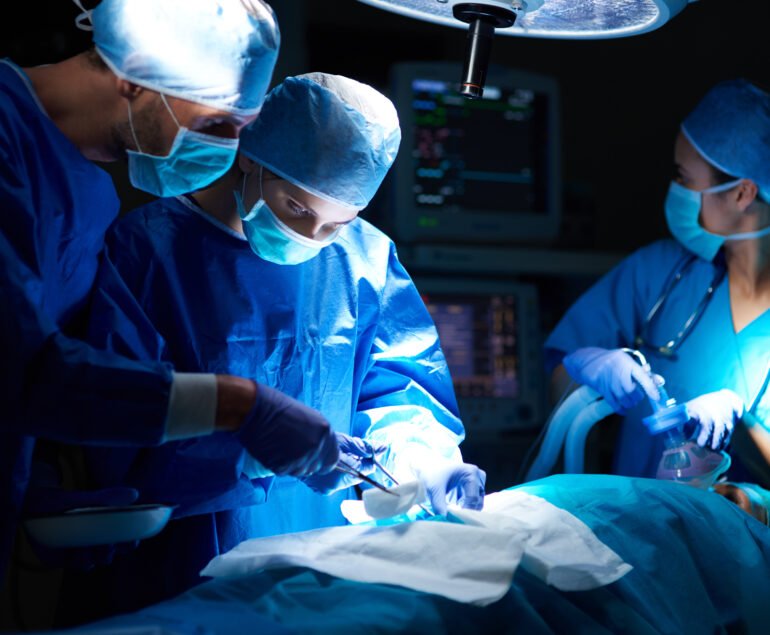Laparoscopic surgery, commonly referred to as keyhole or minimally invasive surgery, is a type of surgery that is carried out through tiny incisions with the use of specialized instruments and a camera. Laparoscopic surgery uses cutting-edge technology to reach interior organs with minimum tissue damage in contrast to traditional open surgeries that call for extensive incisions.
A tiny incision in the abdominal wall is used to insert a laparoscope, which is a thin and flexible tube with a high-resolution camera to start the process. The surgeon can precisely see the operation part because of the real-time internal organ imaging from this camera. The surgeon makes additional tiny incisions to insert specialized devices, which improves dexterity and allows for more complex movements.
Need of laparoscopic surgery
Laparoscopic surgery is required for a variety of medical ailments, ranging from intricate operations to diagnostic tests. The following are a few typical indications for laparoscopic surgery:
- Gallbladder illness: laparoscopic cholecystectomy is the standard way for treating gallbladder illness as it allows patients to recover more quickly and have less discomfort following surgery.
- Appendicitis: laparoscopic appendectomy is a minimally invasive method for removing the appendix, which reduces the chance of surgical complications and speeds up recovery to return to regular activities.
- Digestive disorders: Less scarring and quicker recovery are achieved for individuals undergoing laparoscopic surgery for disorders such as hernias, reflux disease, and inflammatory bowel disease.
- Gynaecological Conditions: women can recover from gynecologic surgery more quickly and spend less time in the hospital when using laparoscopic techniques.
Benefits of laparoscopic surgery
Laparoscopic surgery is the favoured option for both patients and surgeons because of its many advantages over traditional open surgery. These benefits include:
- Less trauma: the surrounding tissues sustain less trauma because laparoscopic treatments require smaller incisions. This results in less blood loss, less discomfort following surgery, and quicker healing.
- Faster recovery: laparoscopic patients usually require fewer hospital stays and recuperate more quickly compared to open surgery. Improved quality of life and a quicker return to regular activities are facilitated through smaller incisions and less trauma.
- Improved cosmesis: laparoscopic surgery leaves fewer scars because of its tiny incisions, which leads to better cosmetic results. Patients who are worried about the appearance of their results may especially benefit from this surgery.
- Lower risk of problems: laparoscopic surgery is linked to a lower risk of surgical problems such as adhesions, hernias, and wound infections. This improves patient safety and lowers total morbidity.
- Better visualisation: Surgeons can perform more accurate and thorough surgical procedures due to the improved visualisation of the surgical part in the laparoscopes. This results in better surgical outcomes and more accuracy.
The Risk Associated with Laparoscopic Surgery
Although laparoscopic surgery has many benefits, there are certain hazards involved. The following are a few possible risks connected to laparoscopic procedures:
- Intraoperative complications: Although technology has advanced, there is still a chance of intraoperative complications with laparoscopic surgery, including haemorrhage, organ damage, and unintentional damage to nearby structures. These risks can be reduced with knowledge and careful surgical technique.
- Carbon dioxide embolism: carbon dioxide embolism is a potentially fatal consequence of laparoscopic surgery that occurs seldom when carbon dioxide gas is inhaled into the abdominal cavity. Nonetheless, this risk is incredibly uncommon and is quickly manageable by skilled surgical teams.
- Pneumothorax: an unintentional injury to the diaphragm or pleura results in an accumulation of air in the pleural cavity that can occur from laparoscopic surgery. Pneumothorax is uncommon, but it needs to be treated right away to avoid breathing compromise.
- Postoperative consequences: Laparoscopic surgery has the same potential for postoperative consequences as any other surgical operation, including bleeding, infection, and intestinal blockage. However, the frequency of these problems is decreased because laparoscopic procedures are less intrusive than open surgery.
Effectiveness of laparoscopic surgery
Laparoscopic surgery is beneficial in many different medical areas. The following are important elements that influence the success of laparoscopic surgeries:
- Precision and accuracy: Surgeons can undertake difficult treatments with greater accuracy because of the ability of laparoscopic surgery to manipulate tissues and structures precisely. As a result, there is a lower chance of complications and better surgical outcomes.
- Quicker recovery: Compared to open surgery, patients undergoing laparoscopic surgery had shorter hospital stays and quicker recovery periods. They speed up the healing process and enable patients to resume regular activities sooner because laparoscopic procedures are minimally invasive.
- Patient satisfaction: Patients who have laparoscopic surgery have higher levels of satisfaction and a better quality of life because it is a less invasive treatment than standard open surgeries. Overall patient satisfaction is increased because of quicker recovery times, less pain following surgery, and better cosmetic results.
- Versatility: Laparoscopic surgery is a versatile instrument that surgeons can use to address a wide range of surgical needs, and it applies to a wide range of medical disorders. Surgeons can address a variety of patient demands with laparoscopic techniques, which give them flexibility in everything from diagnostic procedures to sophisticated operations.
Dr Shyam Sunder Pachisia offers effective laparoscopic surgery in Noida
Dr. Shyam Sunder Pachisia is a well-known laparoscopic surgeon who has significantly contributed to minimally invasive surgery. He is a pioneer in the field of laparoscopic surgery in Noida, providing state-of-the-art care to patients due to his considerable training and experience in the procedure. His pioneering work in laparoscopic surgery has improved patient outcomes and revolutionized surgical treatment, showing his unwavering commitment to quality. His dedication to remaining up to date with emerging technologies and methods guarantees that patients get the best care possible.
Our approach to laparoscopic surgery is known for precision, compassion, and a patient-centred perspective. He places a high priority on customized treatment regimens made to fit the specific needs of each patient to ensure the best possible results and patient happiness. Dr. Shyam Sunder Pachisia is committed to providing the highest level of professionalism and experience in surgical care, regardless of the complications of the surgery. Patients rely on us and admire us because of our steadfast dedication to patient safety and satisfaction.
Hence, laparoscopic surgery offers minimally invasive treatments to patients for a variety of medical ailments. This kind of surgery is becoming the procedure of choice for both surgeons and patients due to its many advantages, such as less trauma, faster recovery, and better cosmetic results. If you are looking for the best laparoscopic surgery in Noida, then Dr, Shyam Sunder Pachisia is here to help you. contact us today to get in touch with our doctor and get the best possible surgery for your issue.



